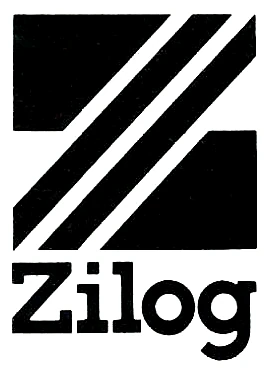
Zilog Advert - December 1979
From Practical Computing

How to solve Systems problems - Zilog's MCZ family
Here's a rare advert from Zilog for its MCZ range of micros - everything from an entry-level floppy-disk-based model up to the MCZ 1/35 rack-mount machine with 10MB storage.
The entry-level "low cost" machine retailed at around £4,000, or in the region of £28,700 in 2025.
The MCZ range had been around since at least the summer of 1978, when Zilog announced the extension of its range with the launch of the MCZ-1/60.
At the time, the entry-level MCZ-1/01, with 32K RAM and two floppy disk drives, was available from its UK distributor Memec Systems of Thame in Oxfordshire for £3,500 - about £27,200 in 2025[1].
The MCZ machines might have been just another bunch of Z80 micros in a crowded market, but in this case it was fair enough as Zilog was the inventor and manufacture of that chip.
Zilog was co-founded in 1974 by Frederico Faggin, who had previously worked at Intel, where he had been involved with the early 4004 and 8008 CPUs, and where he would help design the influential 8080, along with Masatoshi Shima.
Guy Kewney wrote his interpretation of the birth of Intel's CPU line in the first ever edition of Personal Computer World, in February 1978, summarising the story as:
"A company called [CTC] Datapoint approached Intel and asked for a processor/terminal controller which could, in effect, be a computer. Intel rather over-optimistically said the job could be done and produced the 8008 - which was no good for the task, it could not be reliably built, and it was not powerful enough for a dissapointed Datapoint. Intel scaled it down to the 4004, which played innumerable games of TV ping-pong, and up to the 8080 when they got smart enough. The 8080 and its wretched instruction set were upgraded by Motorola into the 6800 and by Zilog into the Z80, and the 6800 was upgraded by MOS Technology into the 6502. These are the machines we amateurs have to live with today[2].
Keith Chapple of Intel UK was quick to refute this recounting of events in the subsequent edition of Personal Computer World, saying:
"In 1969 a calculator manufacturer approached Intel with a request to design a custom chip set for a range of electronic calculators, and the idea of producing a computer-like architecture on silicon chips was conceived. The result was the 4004, a four-bit word length microprocessor which did everything that was required of it. Intel went on to develop the first 8-bit word length microprocessor which was designated the 8008. This was also a very successful device, is still in production and very large quantities have been produced[3]".
In any event, because the 8008 wasn't powerful enough for its needs, CTC turned over the IP to Intel rather than pay a $50,000 contract fee, so Intel was then free to sell it on to the wider market.
Named to sound like the more successful 4004, the two chips weren't closely related, but both were built with scientific calculators or terminals in mind. As Keynew wrote:
"This might help to explain why the 8008 hasn't got such a brilliant instruction set - it wasn't specifically designed for personal computing".
Zilog's first major product - the Z80 - was released in 1976 as a much cheaper, more capable but binary-compatible replacement for Intel's later and more-successuful 8080 chip. It was largely designed by Shima, who had left Intel and joined Zilog in February 1975[4].
Unlike Motorola, which immediately sued MOS Technology when the latter released its 6501 and 6502 CPUs - which were loosely based on the Motorola 6800 - Intel showed no signs of taking action against Zilog, even though the Z80 was designed by ex-Intel engineers and was made to be binary-compatible.
Perhaps that's because Intel - which at the time was mostly a memory-chip manufacturer - wasn't especially bothered about its microprocessors, at least in the early 1970s, with founder Robert Noyce saying about the initial approach from CTC/Datapoint that:
"it was an intriguing idea, and that Intel could do it, but it would be a dumb move. If you have a computer chip, you can only sell one chip per computer, while with memory, you can sell hundreds of chips per computer[5]".
Because of its software compatibility with the Intel 8080, the popular business operating-system-of-choice of the day - CP/M - would work on it without alteration, making Z80-based machines popuplar in the small-business world.
CP/M in turn became known as the de-facto operating system for the Z80, and the two drove each other's success in a closely symbiotic relationship.
The Z80 CPU ended up on machines like the TRS-80, Sinclair's ZX80, ZX81 and Spectrum, Amstrad's range of CPC micros, and countless other random boards and micros of the late 70s.
Meanwhile, Zilog spent several years backed by funds from oil behemoth Exxon, but it wasn't until around 1980 that the company actually made any money, even though its Z80 - along with MOS Technology's 6502 - accounted for much of the microcomputer CPU market for the decade between 1975 and 1985.
The name Zilog apparently derived from "Z", meaning the last word (well, letter at least), "I" meaning "integrated" and Log for Logic - hence the "last word in integrated logic"[6].
As well as that, it was unusual in that the company had its own comic-strip hero - Captain Zilog[7].
Date created: 02 February 2015
Last updated: 11 December 2024
Hint: use left and right cursor keys to navigate between adverts.
Sources
Text and otherwise-uncredited photos © nosher.net 2025. Dollar/GBP conversions, where used, assume $1.50 to £1. "Now" prices are calculated dynamically using average RPI per year.